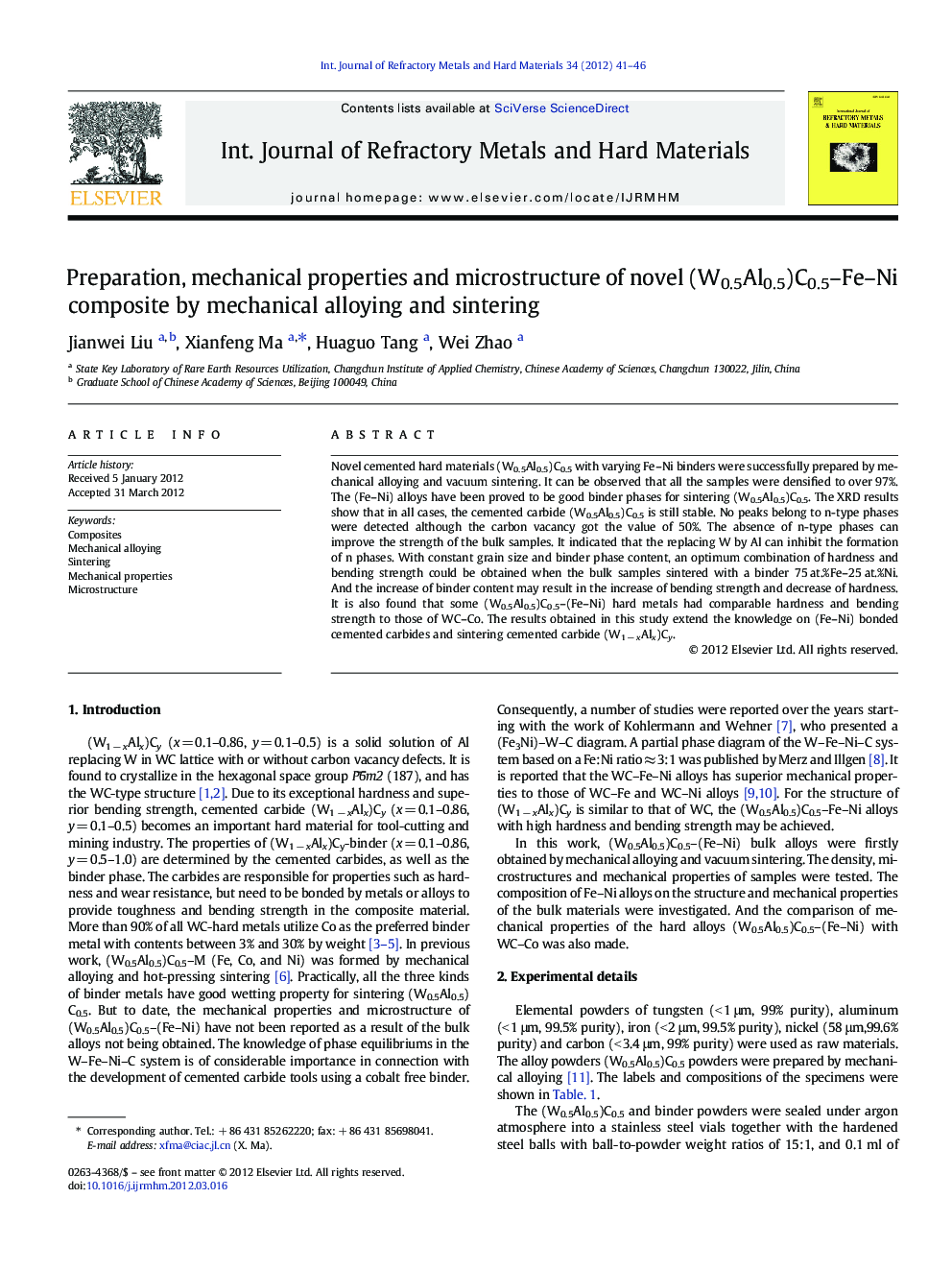| Article ID | Journal | Published Year | Pages | File Type |
|---|---|---|---|---|
| 1603792 | International Journal of Refractory Metals and Hard Materials | 2012 | 6 Pages |
Novel cemented hard materials (W0.5Al0.5)C0.5 with varying Fe–Ni binders were successfully prepared by mechanical alloying and vacuum sintering. It can be observed that all the samples were densified to over 97%. The (Fe–Ni) alloys have been proved to be good binder phases for sintering (W0.5Al0.5)C0.5. The XRD results show that in all cases, the cemented carbide (W0.5Al0.5)C0.5 is still stable. No peaks belong to n-type phases were detected although the carbon vacancy got the value of 50%. The absence of n-type phases can improve the strength of the bulk samples. It indicated that the replacing W by Al can inhibit the formation of n phases. With constant grain size and binder phase content, an optimum combination of hardness and bending strength could be obtained when the bulk samples sintered with a binder 75 at.%Fe–25 at.%Ni. And the increase of binder content may result in the increase of bending strength and decrease of hardness. It is also found that some (W0.5Al0.5)C0.5–(Fe–Ni) hard metals had comparable hardness and bending strength to those of WC–Co. The results obtained in this study extend the knowledge on (Fe–Ni) bonded cemented carbides and sintering cemented carbide (W1 − xAlx)Cy.
► (W0.5Al0.5)C0.5–Fe–Ni was prepared by mechanical alloying and vacuum sintering. ► The replacing W by Al can inhibit the formation of ƞ-type phases. ► Impacts of binder on the structures and mechanical properties had been studied. ► The (W0.5Al0.5)C0.5–Fe–Ni has superior mechanical properties to WC–Co.
